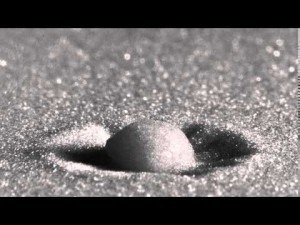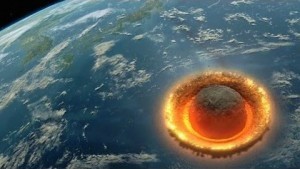When you think about the risks of a meteor impact with Earth, you might think the bigger the rock the bigger the danger. It turns out that’s only part of the story.
When it comes to really big impacts, such as the 10 kilometer wide Chicxulub asteroid that led to the extinction of dinosaurs, it is true that bigger is badder. But such impacts are exceedingly rare, occurring only once in 10 to 100 million years. It is exponentially more likely that a smaller meteor will strike the Earth. For smaller impacts factors such as speed, trajectory and location play a significant role.
The severity of a meteor impact is typically measured not in diameter but in kinetic energy. This is caused by a combination of mass and speed. A small meteor moving at great speed has more kinetic energy than a larger meteor moving slowly. In the same way, a bullet can do much more damage than a baseball, even though a baseball has much more mass. Since smaller meteors outnumber larger ones, speed is a greater risk factor. For example, the Chelyabinsk meteor that struck Russia in 2014 was only about 20 meters across. Meteors of this size are estimated to strike the Earth every 50 years or so. But this particular meteor struck the atmosphere with a speed of nearly 20 kilometers per second. It released about 500 kilotons of energy (about 25 times the energy of Hiroshima) resulting in damage to more than 7,000 buildings and injuring nearly 1,500 people.
The amount of damage is quite small for its energy, which was due to the fact that it had a fairly shallow trajectory. If it had entered our atmosphere at a much steeper angle, most of the energy would have been released near the Earth’s surface, causing much more damage. Instead most of the energy was released higher in the atmosphere, so only the resulting shockwave caused immediate damage. Trajectory matters. In 1972 a slightly smaller meteor struck our atmosphere with such a shallow angle that it entered and left our atmosphere. The only impact it had on us was to provide a daylight fireball.
The largest impact in recorded history was the 1908 Tunguska impact. This was caused by a 40-meter wide asteroid or comet striking our atmosphere at about 15 kilometers per second. The energy it released is estimated to be about 30 megatons, or 2,000 times that of Hiroshima. Observers 40 miles from the event were knocked to the ground by the shockwave and said the heat was so strong they felt as if they were on fire. The Tunguska impact knocked down trees over a 2,000 square kilometer area. Fortunately it occurred in a remote area of Siberia, so there was no fatalities.
The location of an impact matters. If the Tunguska event had occurred near a major city like London or New York, it would have killed millions. If it had occurred during the height of the cold war, it could have triggered World War III. While the Tunguska event was large, it isn’t geologically rare. It’s likely that an event of that size occurs every couple centuries or so. But the Earth has lots of ocean and remote lands, so the chance of such an impact striking a city is quite small.
While the risk of deadly impacts from medium-sized impacts isn’t zero, the risk is quite low. So there’s no reason to brace for impact.













Comments
Meteorites need not be deadly. Meteorite iron is good material for wedding rings for those of the right mind.